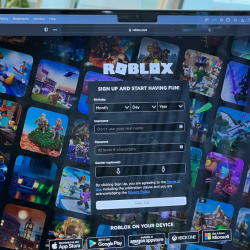There’s a move towards tapping into the collective wisdom of the crowd…
With social media allowing anyone to air their views, brands have a limitless supply of customer feedback upon which to base business decisions. But perhaps, as well as seeking outside views, brands should take a closer look inwards and consider how best to harness the power of their own teams. Because there’s no doubt that a company’s workforce may hold more answers than you realise. What can psychology tell us about harvesting the best ideas from your people? The first observation is the importance of remaining open to as broad a range of perspectives as possible. There’s evidence to show that mixed groups deliver better outcomes.

A 2006 study showing this comes from Katherine Phillips at Northwestern University in the US, who investigated how diversity affected group decision-making. She recruited 216 students and divided them into groups of three based on their ethnic background. These groups were either made up of a similar or diverse mix. Participants began by spending 20 minutes reading about a murder mystery. They were then gathered into their groups and given 35 minutes to decide who they thought the murderer was. The results were interesting. The mixed groups got the answer right 75% of the time — whereas similar groups were only correct 54% of the time. A significant 19 percentage point difference.
Phillips’ study is interesting as most diversity studies are correlational. For example, showing that businesses that have a more balanced gender mix tend to perform better. However, these types of studies make it hard to draw conclusions about causation. Does diversity result in improved performance? Or could it be that better run companies are simply more likely to hire broadly? Phillips’ study avoids that problem. She holds all other factors the same between the two groups. That way, she can attribute the superior performance to the diversity. According to Phillips the benefits of diversity are not limited to ethnic background. Her experiments have shown, for example, that groups of mixed political persuasion tend to outperform homogenous groups.
Whether its gender, class, age or political persuasion, mixed groups tend to perform better, for two big reasons: first, informational diversity. In Phillips’ words: ‘People who are different from one another in race, gender and other dimensions bring unique information and experiences to bear on the task at hand.’ Second, diverse groups engender greater reflection of opposing opinions: ‘When disagreement comes from a socially different person, we are prompted to work harder. Diversity jolts us into cognitive action in ways that homogeneity simply does not.’
There’s a lesson here for businesses: casting your net wide when recruiting is not only more ethical, it’s also more effective. Because the greater the mix of people you have, the more likely they are to offer up creative solutions to your challenges.
Against conformity
However, diversity alone is not enough. Matthew Syed, in his fantastic book Rebel Ideas, argues that for businesses to reap the benefits, they need to overcome a deep-rooted human tendency: conformity. Studies into conformity date back to 1951 and the work of one of the most influential figures in psychology: Solomon Asch.
In his classic study participants believed that they were taking part in a vision test. They were shown a piece of card with a line on it, and had to select which line from a range of three others was the same length:
It was a deliberately simple task, and when people did it alone they answered correctly more than 99% of the time. However, in the main experiment, participants completed the task in groups of up to sixteen. Unknown to participants, the other members of their group were confederates who had been instructed on how to answer.
Each participant took part in eighteen trials in total and were seated toward the end of the group such that they gave their answer after all but one of the others had given theirs. In twelve of the trials, the confederates were told to give the same obviously wrong answer. Researchers observed whether participants remained independent and gave the answer they knew to be correct, or conformed and gave the wrong answer in line with the majority.
The results were remarkable. 75% of participants conformed at least once by giving a clearly wrong answer. Overall, one third of the answers to what was an incredibly simple task were incorrect. All because of the urge to fit in.
So, the drive to conform is strong: this can be a problem for businesses because it stifles the benefits of diversity. It’s hard for a company to draw on the breadth of information and experience of a heterogeneous workforce if everyone mimics the crowd — or the boss.
What can you do?
First, hire a diverse range of staff. We know from experiments by the likes of Phillips the potential upside of having a team with a breadth of experiences.
Second, don’t rest on your laurels. Alongside your recruitment approach, create a culture of non-conformity. Make sure to praise and reward those who propose unpopular views that contradict the received wisdom.
That might sound like a minor intervention, but Asch found it only took a solitary dissenter among the confederates to liberate his participants from the shackles of conformity. When the participant was not the only one deviating from the group, conformity dropped to 5%. This was true even when the confederate gave the wrong answer.
One of nicest ways to reduce the potentially damaging effects of conformity that I’ve come across is to encourage the most junior in the room to share their ideas first. That way, you remove any sense they may have to conform with the bosses. If you adopt these two tactics, you’ll be a step closer to harnessing your people power, by ensuring that a mix of views can be shared and openly discussed. And you’ll foster a welcoming environment for your workforce too.
Featured image: Anna Shvets / Pexels

































